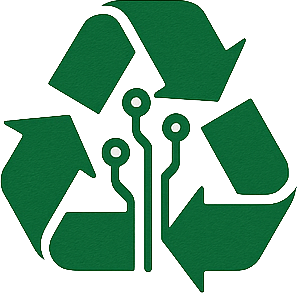In the United States, the safe disposal of pharmaceutical waste has emerged as a pressing environmental and public health concern. With millions of unused or expired medications discarded annually, improper handling poses risks of water contamination, drug misuse, and ecological harm. This article delves into the latest developments surrounding pharmaceutical waste management, including regulatory updates, innovative solutions, and the broader implications for communities. As the nation grapples with this growing issue, stakeholders are pushing for sustainable practices to protect both people and the planet.
The Growing Problem of Pharmaceutical Waste
Pharmaceutical waste includes expired, unused, or unwanted medications from households, hospitals, and pharmacies. The U.S. generates an estimated 200 million pounds of such waste each year, according to the Environmental Protection Agency (EPA). Improper disposal—often through trash bins or flushing down toilets—can lead to drugs leaching into groundwater or being accessed for illicit use.
This issue has gained attention as studies reveal the presence of trace pharmaceuticals in drinking water supplies. The risks are twofold: environmental damage and public safety. Addressing this challenge requires coordinated efforts from regulators, healthcare providers, and the public.
Regulatory Updates on Disposal of Pharmaceutical Waste
Recent federal and state-level policies aim to curb the mishandling of pharmaceutical waste. In 2023, the Drug Enforcement Administration (DEA) expanded its National Prescription Drug Take Back Day, collecting over 300 tons of medications during its April and October events. This initiative encourages Americans to return unused drugs to designated drop-off locations.
Additionally, the EPA continues to refine guidelines under the Resource Conservation and Recovery Act (RCRA) to manage hazardous pharmaceutical waste from healthcare facilities. According to Dr. Susan Harper, an environmental policy expert at Johns Hopkins University, “These regulations are a critical step, but enforcement and public awareness remain key hurdles.”
Impact on Stakeholders
The burden of managing pharmaceutical waste falls on multiple groups. Pharmacies and hospitals face rising costs to comply with disposal regulations, often passing these expenses to consumers. Meanwhile, patients are frequently unaware of safe disposal options, with a 2022 survey by the National Community Pharmacists Association revealing that 60% of Americans dispose of medications improperly.
Local governments also struggle with funding secure collection programs. In states like California and Washington, legislation mandates drug manufacturers to finance take-back programs, easing the strain on public resources. However, nationwide adoption of such “producer responsibility” laws remains inconsistent.
Innovative Solutions Emerging in the US
Amid these challenges, technology offers promising avenues for safer disposal. Companies are developing mail-back programs and at-home deactivation kits that neutralize medications before disposal. For instance, DisposeRx provides packets that turn pills into a non-retrievable gel when mixed with water.
Community-driven efforts are also gaining traction. Over 5,000 permanent drug drop-off sites now operate across the US, often located at pharmacies or police stations. “Innovations like these empower individuals to act responsibly,” notes Dr. Emily Carter, a public health researcher at Stanford University.
Why Proper Disposal Matters
The significance of addressing pharmaceutical waste extends beyond immediate health risks. Contaminated water sources threaten aquatic ecosystems, while unsecured drugs contribute to the opioid crisis—over 70% of misused prescription drugs are obtained from family or friends, per the Substance Abuse and Mental Health Services Administration (SAMHSA).
Looking ahead, experts predict stricter regulations and greater investment in green technologies. However, success hinges on public education. Without widespread awareness, even robust systems may fall short of their potential.
On a positive note, bipartisan support for sustainable waste management is growing. Both environmental advocates and healthcare leaders agree on the need for accessible solutions, though debates persist over who should bear the financial burden—consumers, producers, or taxpayers. Balancing these perspectives will shape future policies.
Conclusion
The disposal of pharmaceutical waste in the United States stands at a critical juncture. With millions of pounds of medications discarded annually, risks to public health and the environment demand urgent action. Recent regulatory strides, community initiatives, and technological innovations offer hope, but challenges like funding and awareness persist. As stakeholders collaborate on solutions, one thing is clear: safeguarding our communities requires a collective commitment to responsible practices. The path forward lies in education, innovation, and accountability.
Frequently Asked Questions (FAQ)
1. What is pharmaceutical waste?
Pharmaceutical waste refers to expired, unused, or unwanted medications from households, healthcare facilities, or pharmacies that require proper disposal to prevent environmental or health risks.
2. How can I safely dispose of medications in the US?
You can use DEA-authorized drop-off locations, participate in National Prescription Drug Take Back Day events, or utilize mail-back programs and deactivation kits available at many pharmacies.
3. Why is improper disposal of pharmaceutical waste dangerous?
Improper disposal can contaminate water supplies, harm ecosystems, and allow access to drugs for misuse, contributing to issues like the opioid crisis.
4. Are there laws regulating pharmaceutical waste disposal?
Yes, federal laws like the RCRA govern hazardous waste management, while some states have additional regulations, including producer-funded take-back programs.
5. How can communities reduce pharmaceutical waste?
Communities can establish more drop-off sites, promote public awareness campaigns, and advocate for policies that hold manufacturers accountable for disposal programs.





